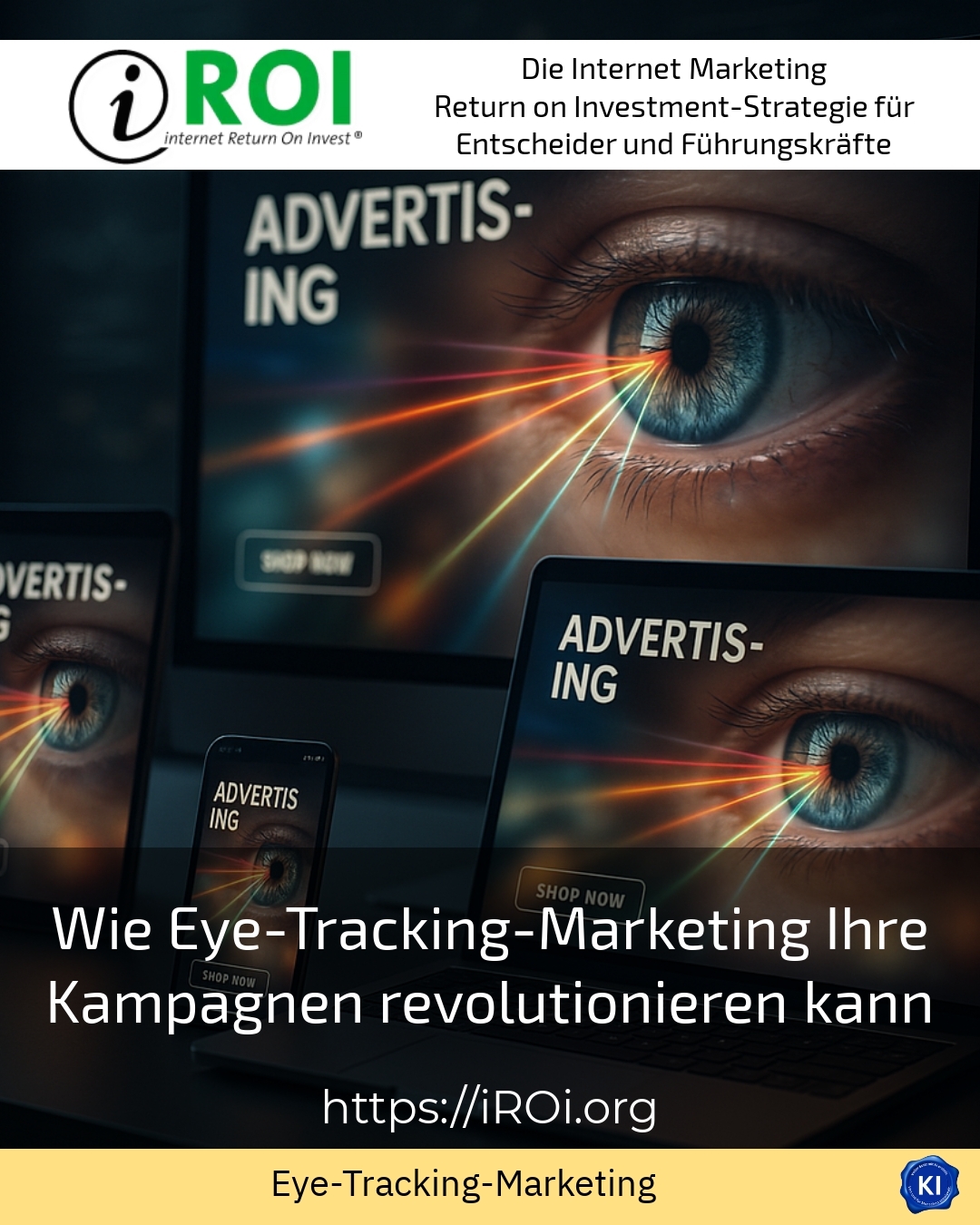In today's dynamic marketing world, innovative methods are becoming increasingly important, especially when it comes to precisely capturing the behaviour of the target group and optimising campaigns in a targeted manner. Eye-tracking marketing helps companies to focus their advertising material precisely where it will have the greatest impact. This technology enables precise analysis of perception, which makes campaigns measurably more effective and creates competitive advantages.
Understanding the basics of eye-tracking marketing
Eye-tracking marketing is based on technology that measures the eye movements of users. This involves analysing which areas of an ad or website particularly attract attention. This gives advertisers insights into the psychological and visual preferences of their target group. For example, they can recognise whether call-to-action elements or important images are noticed at all. These insights are used to design content in an even more targeted way in order to achieve the desired effect.
An example from the consumer goods industry shows how eye tracking is used to design packaging in such a way that it immediately catches the eye. The lighting of certain product features or the positioning of logos are adjusted in such a way that they direct the customer's gaze. Similar applications can be found in automotive marketing - here the visualisation of advertisements helps to find out which features in advertising banners are particularly attractive and trigger buying impulses.
Eye tracking is also a valuable method in digital commerce to increase the user-friendliness of online shops. Visitor behaviour is closely examined in order to identify unnecessary distractions and change the arrangement of product images or buttons to increase conversion rates.
Practical application options and tips for campaign optimisation
Eye-tracking marketing gives companies concrete recommendations for action. Here are some practical examples:
BEST PRACTICE with one customer (name hidden due to NDA contract) A large retail chain used eye-tracking to test how attentively customers perceived advertising posters in the shops. The analysis showed that highly frequented routes tended to contain poster spaces that were ignored. By repositioning and improving the design, the advertising messages could be made much more visible, which led to an increase in customer interaction.
Another example from the tourism sector shows how website visitors can be precisely tracked using eye-tracking analyses. This allowed the optimisation of navigation bars and booking buttons to be derived, making the booking process more intuitive for users and reducing bounce rates.
Social media campaigns also benefit from eye-tracking marketing. By capturing the gaze paths, adverts can be designed in such a way that they immediately catch the eye when scrolling quickly. This increases the chance that messages will be recognised more quickly and links are more likely to be used.
Improved user experience and targeted advertising impact
The data obtained from eye-tracking marketing not only helps with pure advertising design, but also with improving the overall user experience. By positioning information on a website or in a shop in such a way that it appears in the order in which the user looks at it, the user feels more engaged. This increases the likelihood that they will carry out a desired action, e.g. make a purchase or make contact.
Eye tracking is used in the media industry to optimise the layouts of print and online advertisements. Which image areas attract the eye? Which text passages are barely noticed? Such insights lead to a more efficient design because relevant content is placed in the optimum field of vision.
Eye-tracking marketing also supports the intuitive communication of information for more complex products, such as high-tech or financial services. Users are guided step-by-step through visual cues and prioritised content to the conclusion without being overwhelmed.
How iROI-Coaching supports your eye-tracking marketing project
Many companies report that they encounter challenges when getting started with eye-tracking marketing. This is where iROI coaching comes in, providing customers with individualised support and helping them to use this technology step by step. From the selection of suitable methods and the interpretation of data to the implementation of specific measures, the coaching offers well-founded impulses.
BEST PRACTICE with one customer (name hidden due to NDA contract) As part of an international marketing project, iROI Coaching was called in to incorporate eye-tracking results into the revision of several campaigns in a targeted manner. The consultancy helped to prepare the data in an understandable way and to coordinate the resulting design changes with all the teams involved. As a result, the campaigns achieved a measurable increase in user loyalty and conversion rates.
Numerous small and medium-sized companies also benefit from iROI coaching. The individualised support enables them to better understand the complex analysis techniques and use them in a targeted manner - saving time and resources.
BEST PRACTICE with one customer (name hidden due to NDA contract) A tourism company used the coaching to incorporate eye-tracking findings into the further development of its online booking platform. The site was optimised with tailored recommendations so that visitors could navigate to their destination more quickly and efficiently.
My analysis
To summarise, eye-tracking marketing is a modern method for increasing the impact of advertising measures and digital appearances in a well-founded manner. The technology provides valuable insights into user behaviour that are otherwise difficult to access. Those who utilise this data can effectively improve content, design and user experience. In doing so, iROI coaching supports companies in the successful implementation and thus enables the sustainable optimisation of marketing campaigns. Overall, eye-tracking marketing helps to take communication and customer centricity to a new level.
Further links from the text above:
What is eye tracking - Mailchimp
Eye tracking for website analysis - SEO-Küche
What is eye tracking? Application, advantages and future prospects - Krauss GmbH
Seeing with the eye of the beholder - Content manager
Eye tracking - Revolutionise your online marketing - Büro CC
For more information and if you have any questions, please contact Contact us or read more blog posts on the topic internet Return on Investment - Marketing here.
















